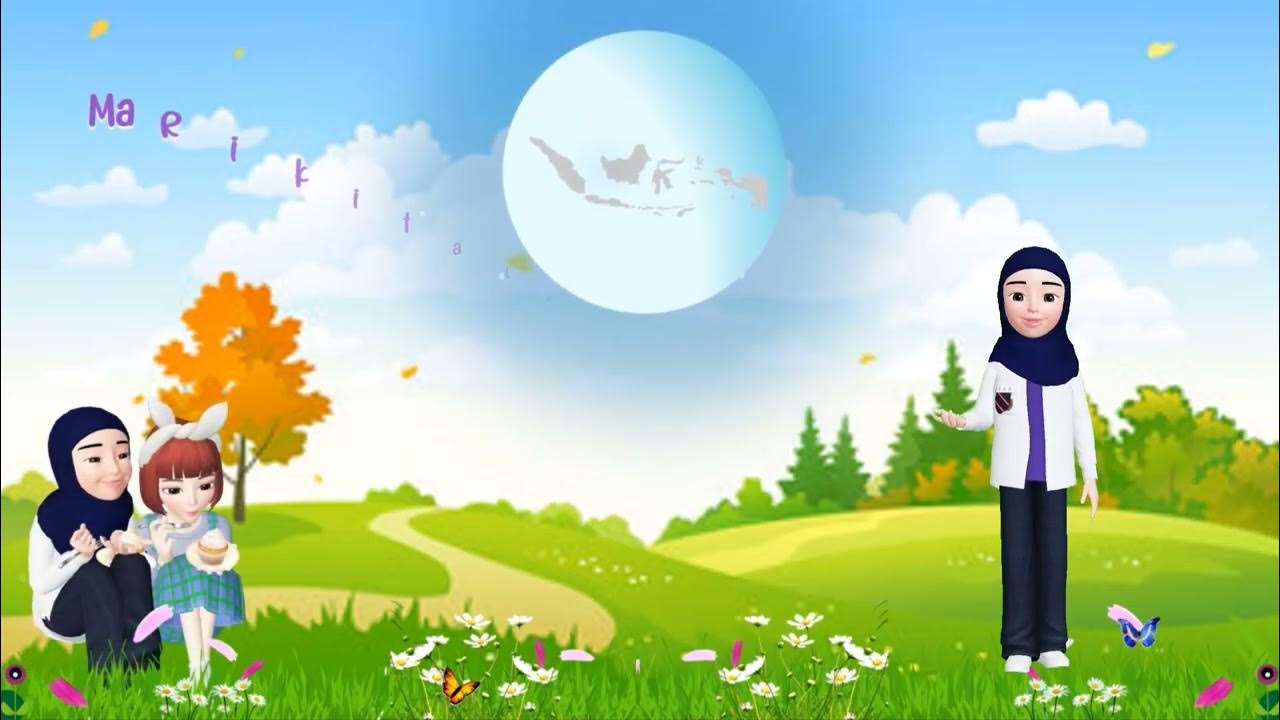Pengamalan Sila Ke 2 Pancasila di Sekolah
Summary
TLDRThis video explores practical examples of applying the second principle of Pancasila in the school environment. It highlights key behaviors such as fulfilling student duties (e.g., studying seriously), helping peers in need, receiving rights (e.g., receiving grades from teachers), and engaging in humanitarian activities (e.g., assisting victims of natural disasters). These examples serve to demonstrate how Pancasila’s principles can guide positive actions and attitudes within educational settings.
Takeaways
- 😀 The video introduces examples of the second principle of Pancasila in the school environment.
- 😀 The second principle of Pancasila is about justice and humanity.
- 😀 The first example is fulfilling student obligations, such as studying seriously.
- 😀 Helping classmates who face difficulties is another example of the second principle in practice.
- 😀 Students are entitled to their rights, such as receiving grades from teachers.
- 😀 Engaging in humanitarian activities, like aiding victims of natural disasters, is another way to embody the principle.
- 😀 The video emphasizes the importance of practicing these principles in the school environment.
- 😀 It highlights that students should take responsibility for their duties and be supportive of others.
- 😀 The video concludes with an encouraging message to stay motivated.
- 😀 The message is aimed at promoting values of justice, humanity, and responsibility in education.
Q & A
What is the second principle of Pancasila, as referenced in the video?
-The second principle of Pancasila is 'Just and Civilized Humanity,' which emphasizes the importance of human dignity, equality, and justice.
What are the four examples of practicing the second principle of Pancasila in the school environment?
-The four examples include: 1) Studying seriously as a student, 2) Helping friends who are facing difficulties, 3) Receiving rights such as grades from teachers, and 4) Participating in humanitarian activities, such as helping victims of natural disasters.
Why is it important to study seriously as a student in relation to the second principle of Pancasila?
-Studying seriously demonstrates respect for the right to education and the responsibility to fulfill academic obligations, contributing to the development of a just and civilized society.
How does helping friends who are experiencing difficulties reflect the second principle of Pancasila?
-Helping friends in need showcases empathy, kindness, and a commitment to human dignity, which are core values of the second principle of Pancasila.
What does receiving grades from teachers represent in the context of the second principle of Pancasila?
-Receiving grades represents the recognition of a student's rights and efforts in the educational process, acknowledging their progress while ensuring fairness and equality.
How do humanitarian activities like helping victims of natural disasters align with the second principle of Pancasila?
-Engaging in humanitarian activities demonstrates a commitment to helping others in need, fostering a sense of justice, solidarity, and respect for human life, which are essential components of the second principle.
What role does the school environment play in practicing the second principle of Pancasila?
-The school environment is a space where students can apply the values of justice, equality, and humanity, such as fulfilling academic obligations, helping peers, and engaging in community service.
How can students practice the second principle of Pancasila outside of the classroom?
-Students can practice this principle by participating in social or volunteer activities, standing up for justice, and helping others in their communities, thereby applying these values in real-life situations.
Why is the practice of the second principle of Pancasila emphasized in educational settings?
-Emphasizing the second principle of Pancasila in schools helps instill values of respect, justice, and humanity in students, preparing them to be responsible citizens who contribute positively to society.
What message does the video convey at the end regarding the practice of the second principle of Pancasila?
-The video encourages viewers to keep up the spirit of practicing the second principle of Pancasila and reassures them that these values are crucial for building a just and humane society.
Outlines

This section is available to paid users only. Please upgrade to access this part.
Upgrade NowMindmap

This section is available to paid users only. Please upgrade to access this part.
Upgrade NowKeywords

This section is available to paid users only. Please upgrade to access this part.
Upgrade NowHighlights

This section is available to paid users only. Please upgrade to access this part.
Upgrade NowTranscripts

This section is available to paid users only. Please upgrade to access this part.
Upgrade NowBrowse More Related Video

10 Contoh Pengamalan Sila Ke-5 Pancasila di Sekolah

Penerapan nilai-nilai Pancasila (Kelompok 5A)

Materi Pendidikan Pancasila Kelas 11 BAB 1 || A. Keterkaitan Antarsila Pancasila - KURIKULUM 2024

Rangkuman Materi PKN Kelas 2 SD Semester Ganjil || Kurikulum Merdeka ||

Materi Pendidikan Pancasila Kelas 10 BAB 2 || B. Menerapkan Perilaku Taat Hukum

Keragaman Sosial dan Budaya Indonesia
5.0 / 5 (0 votes)